Have you ever looked up at the night sky and wondered if there are aliens out there, or if your neighbour’s cat is harbouring a secret space ship?
If you’re looking to launch your astronomic curiosity into orbit, pay a visit to the Cosmos Centre Charleville in Outback Queensland!

The Cosmos Centre is the perfect place to learn about the night’s sky, with its engaging exhibits and hands-on astronomy workshops, the Cosmos Centre is the perfect place for stargazers.
Here’s what you can expect from your visit…
About Charleville Cosmos Centre
The Charleville Cosmos Centre is more than just a planetarium, it’s an experience.
This is Queensland’s largest planetarium, and the place to learn about planets, star constellations, and the science of the universe in a fun and engaging way.
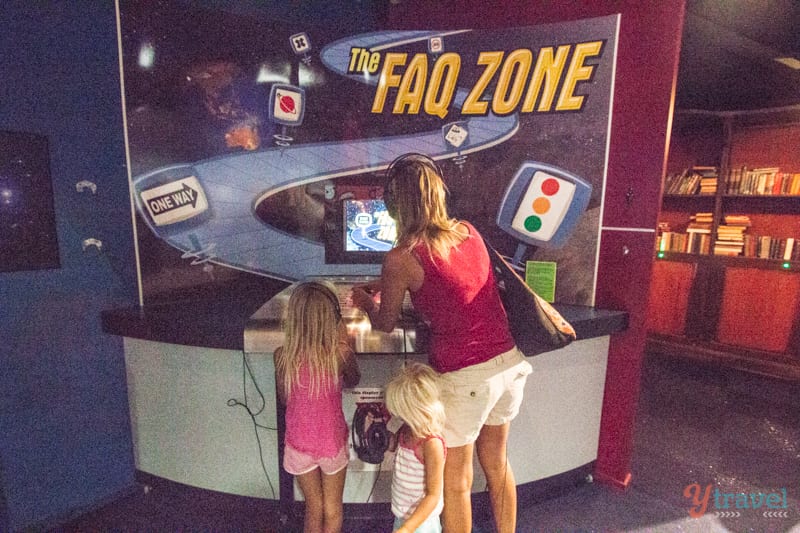
The program is designed for all ages. Our kids loved the storytelling, which made education seem exciting and enjoyable.
They offer both day and night viewing, show planetarium films, and use the most advanced telescopes to view celestial objects, star clusters, binary stars, thousands of light years away!
Enter your email address and we’ll send it straight to your inbox.SEND ARTICLE Send me new posts from y Travel Blog
Through the combination of education and passion for discoveries, this is the best place to get an understanding of the universe and our place in the solar system.
Visiting the Cosmos Centre in Charleville
Day Experience
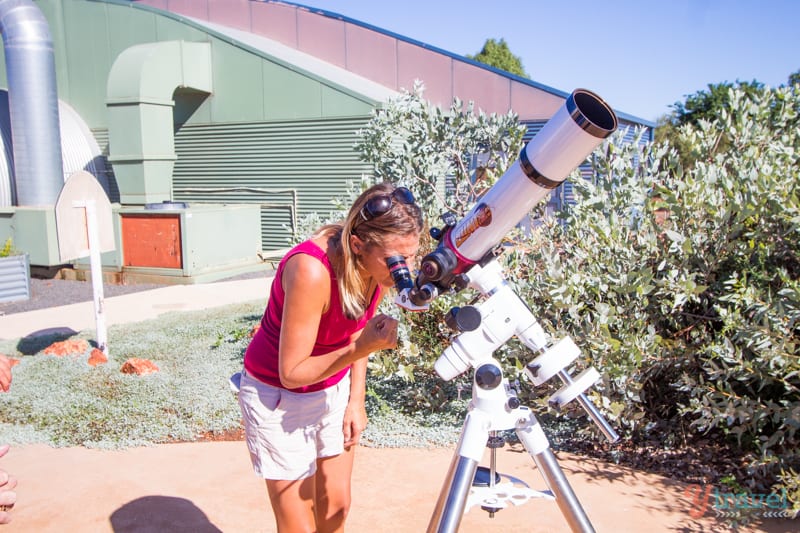
Our first experience at the Charleville Cosmos Centre was to look at the Sun in daytime through special, powerful meade telescopes.
We learned how the Sun is dying and will enlarge so much that it will one day engulf the Earth.
But don’t worry, there’s still 5 billion years to go before that happens.
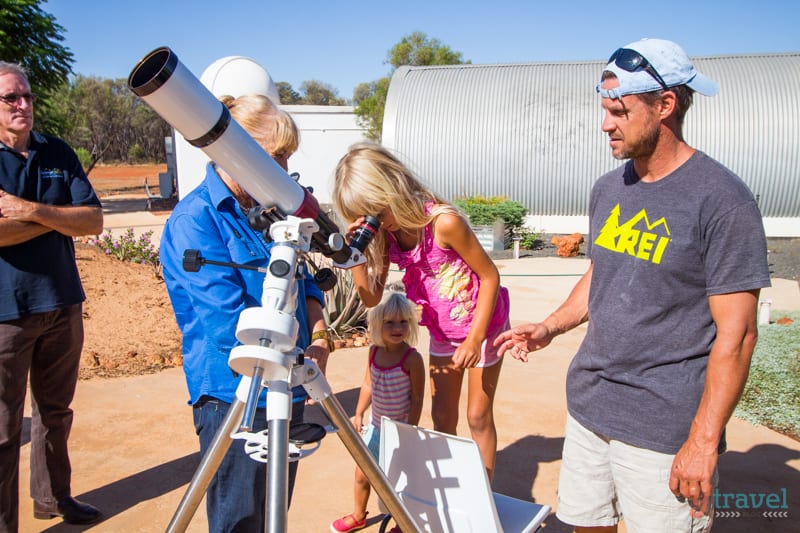
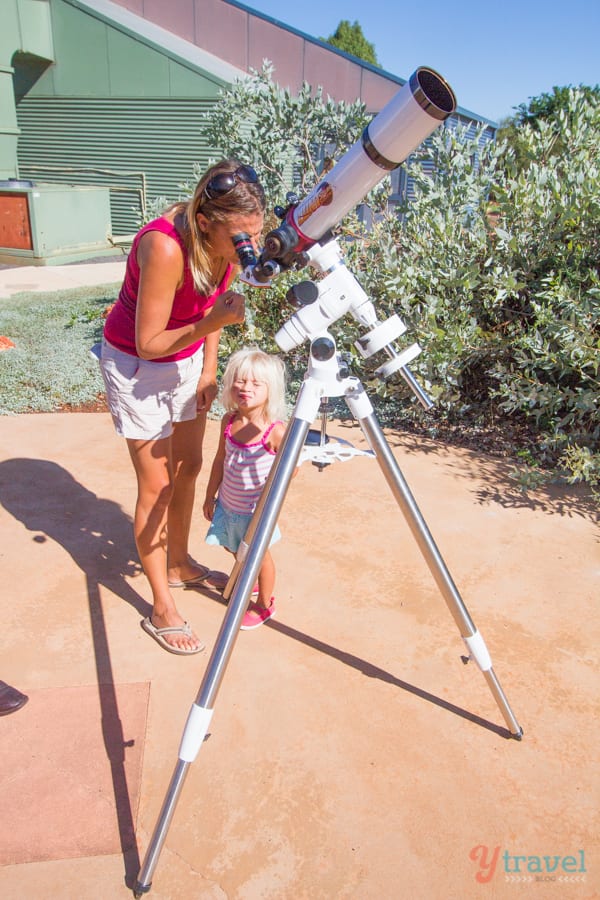
Don’t try this at home kids, but we also stared directly at the sun with our funky special glasses supplied by the Charleville Cosmos Centre.
This was certainly a unique experience, and something we never thought we’d be able to do given how dangerous it is to look directly at the sun.
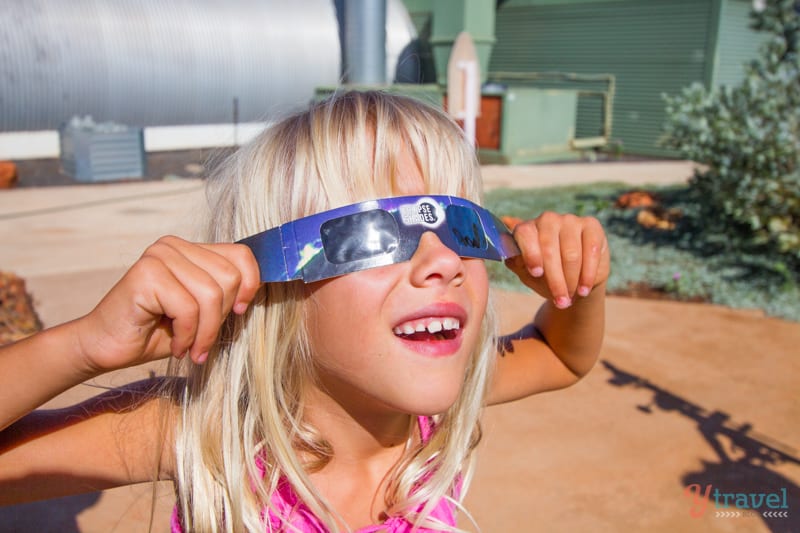
When you dive into astrology, your mind bends itself backwards and twists around until you’re lost and have zero comprehension of time and numbers.
The stars we saw through the telescope were millions of light years away.
When viewed through the telescope, these tiny sparkling dots to the naked eye were actually a cluster of millions of stars.
Millions of stars!!
It’s unbelievable.
It’s unnerving.
I can’t hear about outer space without a sinking feeling of emptiness and black fear.
We’re so small and so insignificant. We can be swallowed up by the blackness at any second. The questions swirl around me.
Why are we here? How can we be so small and so irrelevant? Who else is out there? How can this black space have no end?
I can’t get any answers, so I turn my bleakness over to wonder and gratitude. Even though minuscule, we are still apart of such perfect and mind-bending creation.
I slip back into staring through the telescope again with sheer joy.
I want to see more.
I look into the eyepiece to see the Sun and all I see is blood orange taking up the entire frame.
I look up to see if there is a cap on and then I realise what I’m looking at. I wasn’t expecting it to take up the entire frame and to be so close to it.
“Oh my God, it’s the Sun! And it’s so orange.”
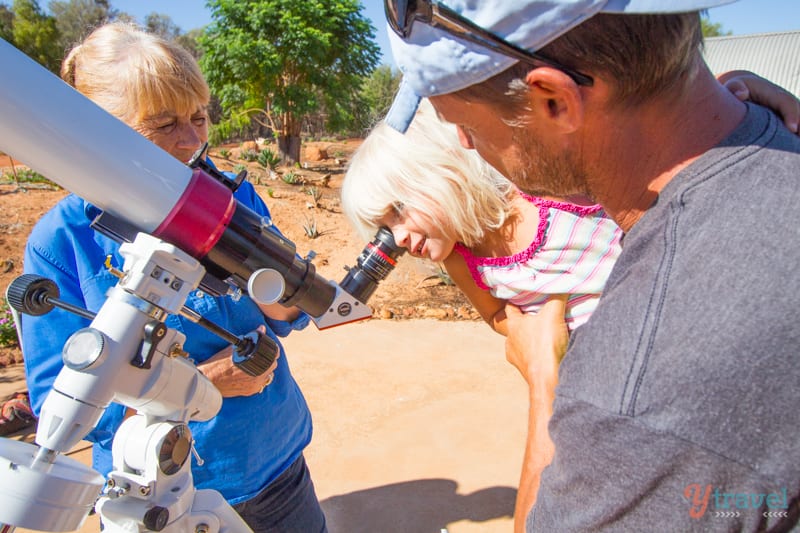
My eyes adjusted and soon the sun’s outline, with a thin ring of black around it appeared. Within the orange circle were black specks, otherwise known as sunspots.
Wispy strings danced around the edge of it. These tiny solar flares in reality can be as big as the earth. It was thrilling.
“That’s like one of the best things I’ve ever seen.”
We looked a couple more times, getting our fix before the Sun rose higher in the sky and became too intense for us to look at. I was in a euphoric daze for some time after.
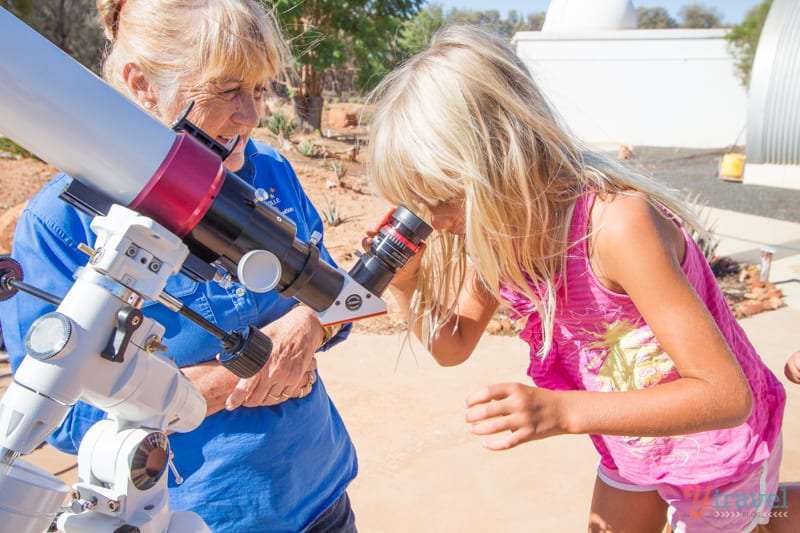
Planetarium and Information Zone
It was hard to concentrate on the interactive displays in the Information Zone inside.
My mind kept drifting back to the flares of a great ball of fire we worshipped going to bed almost every night.
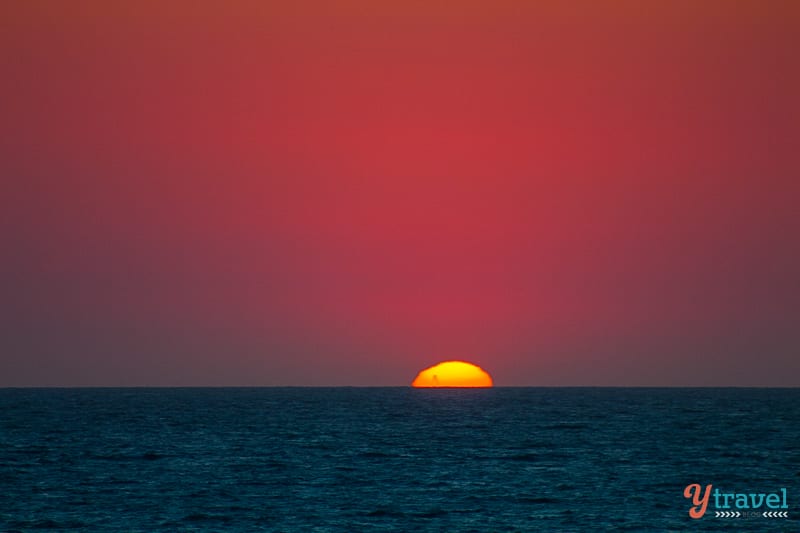
Back inside, there were lots of timeless stories and interesting facts for the kids to learn about space.
The centre is a state of the art facility and has lots of new, modern whizz-bang technology and interactive displays showcasing the expanse of the Cosmos and our galaxy.
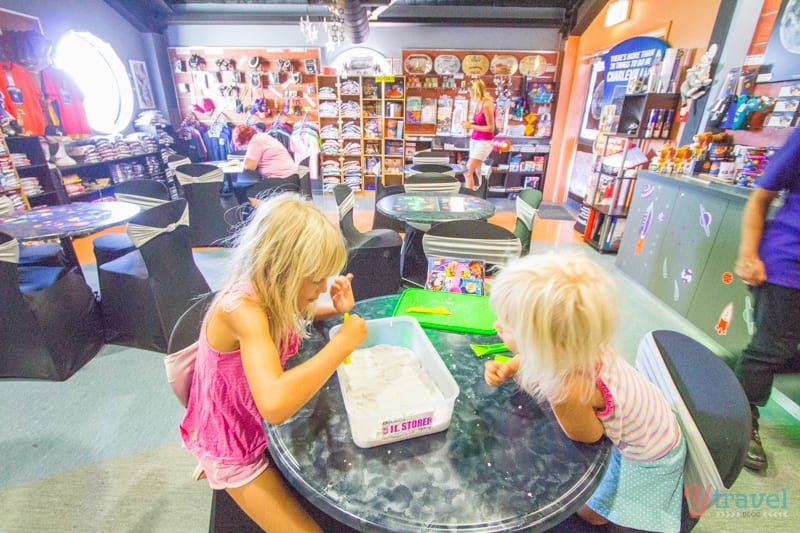
There’s plenty of signage and pictures that make the information easy to digest and understand.

After a quick coffee break (kudos to the training barista – you nailed creamy deliciousness) complete with cute star in the froth, we got to hold a shooting star!
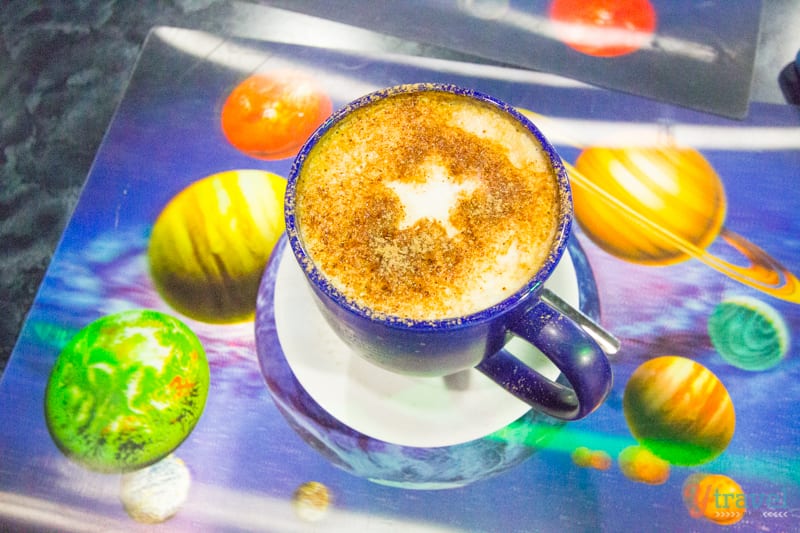
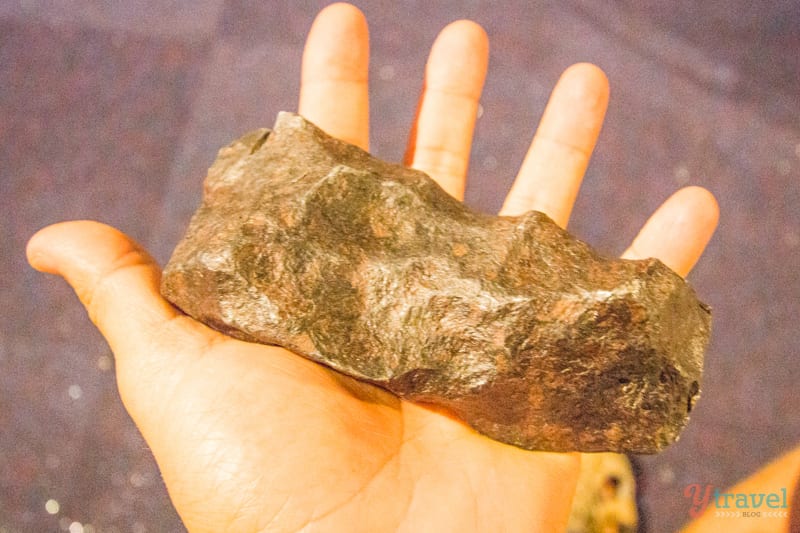
For reals.
Jane, our guide, captivated us with stories of meteorite crashes and we were allowed to touch a few of the outer space rocks.
I actually can’t believe how many meteorites hit the earth and I find it incredible we don’t hear more about them and more people don’t die.
It’s best that you don’t think about it much because, as Jane says, “they’re moving too fast to receive any warning.”
It was truly fascinating learning more about astronomy with Jane, and very educational for all of us.
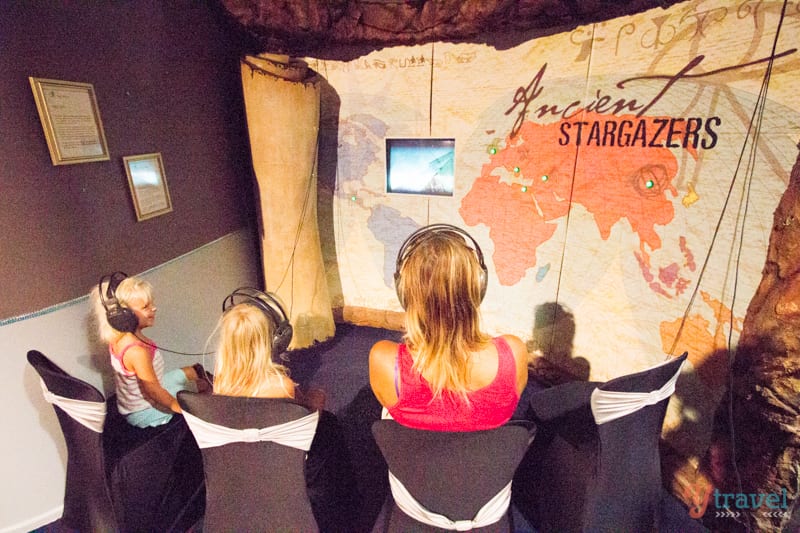
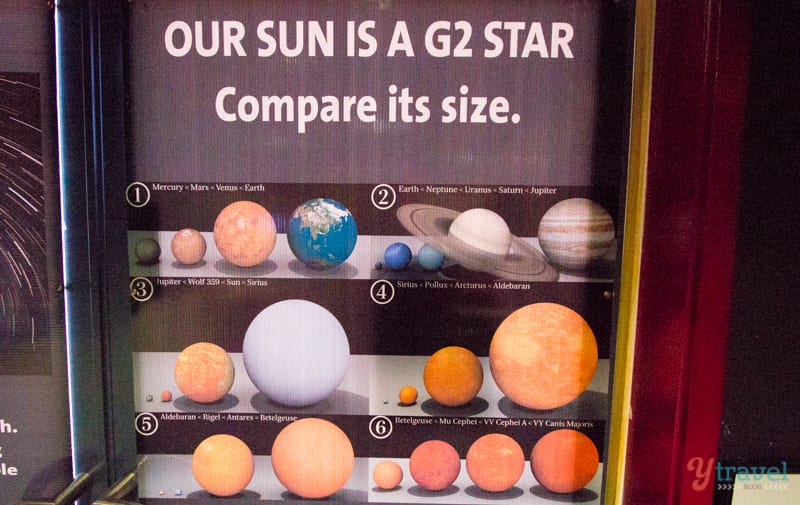
Observatory by night
The highlight in a day of highlights came later that evening when embarked on one of the observatory’s night experiences.

We looked at Jupiter, the wonder of the Outback night sky through giant telescopes in the outside observatory.
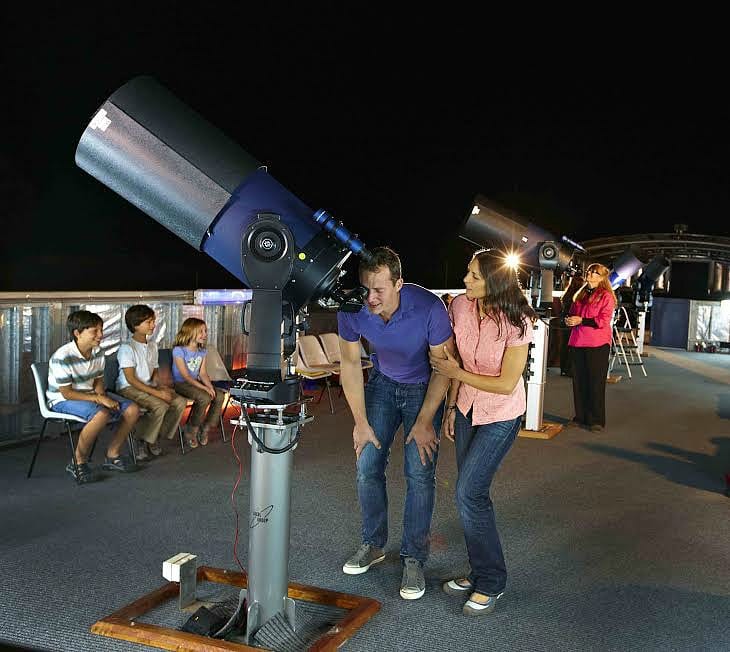
Kalyra will tell you the highlight was looking at the Jewel Box cluster, which is one of the brightest stars in the Southern Cross.
Except, it’s not one star it’s a cluster of about 50 sparkling, colourful stars. Named because it looks like a jewellery box that has spilled out its contents.

Craig will tell you that looking at the moon close up to see every single detail was something he’ll never forget.
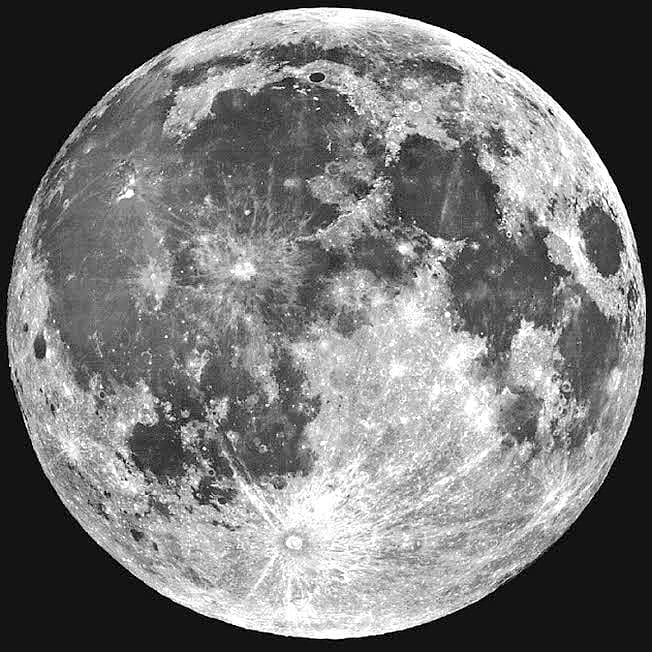
Savannah part agreed with him, and part agreed with me – for me, it was all about Jupiter.
It was the first time I’ve ever seen a planet outside of a textbook.
A perfectly round ball of gas, with black bands around its waist, not giving any indication of the constant cyclonic storm that rages around it.


